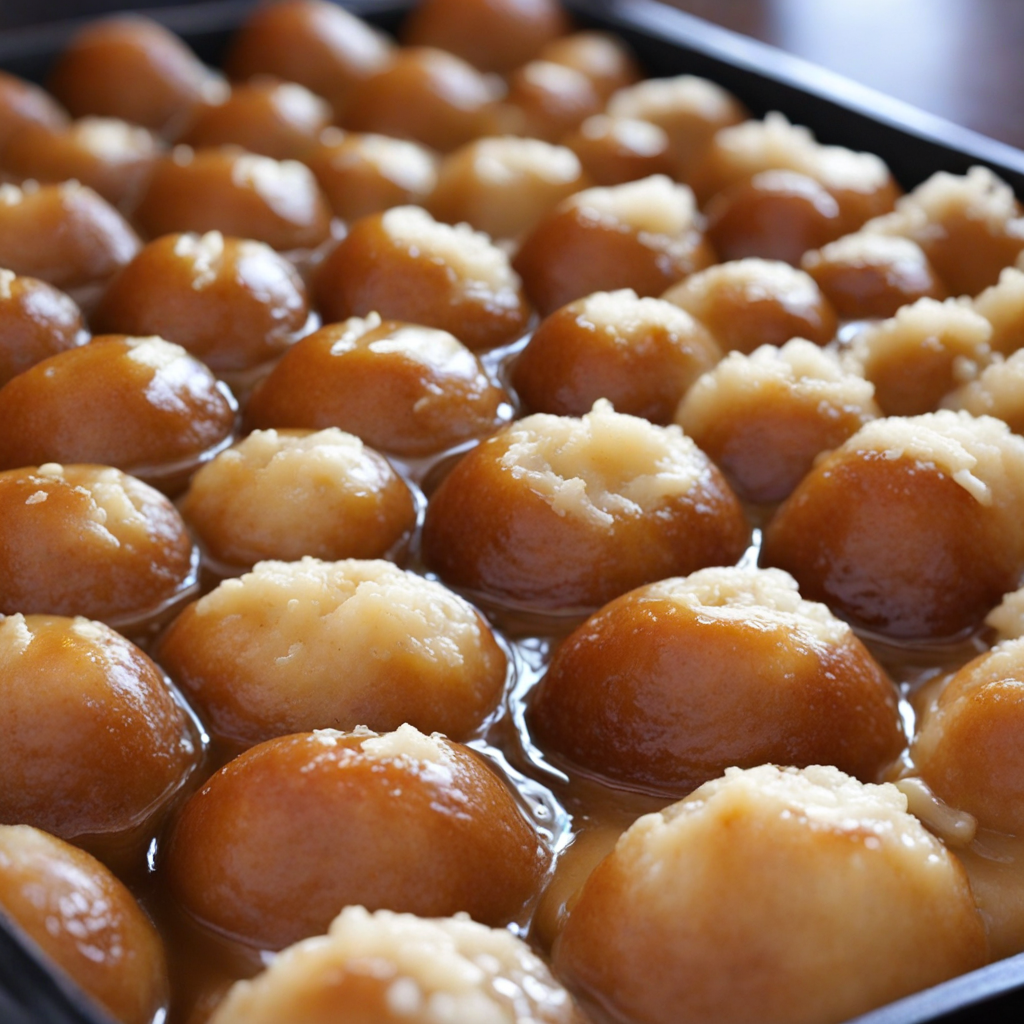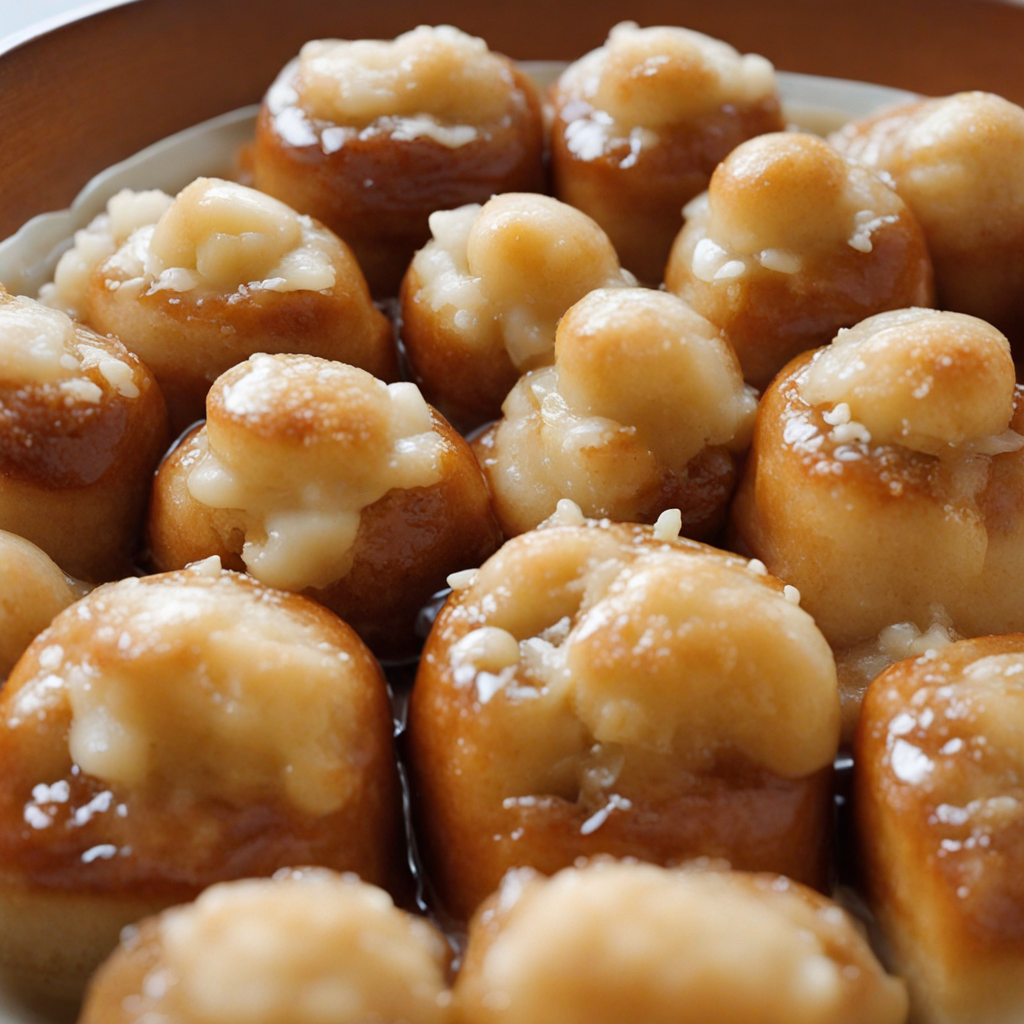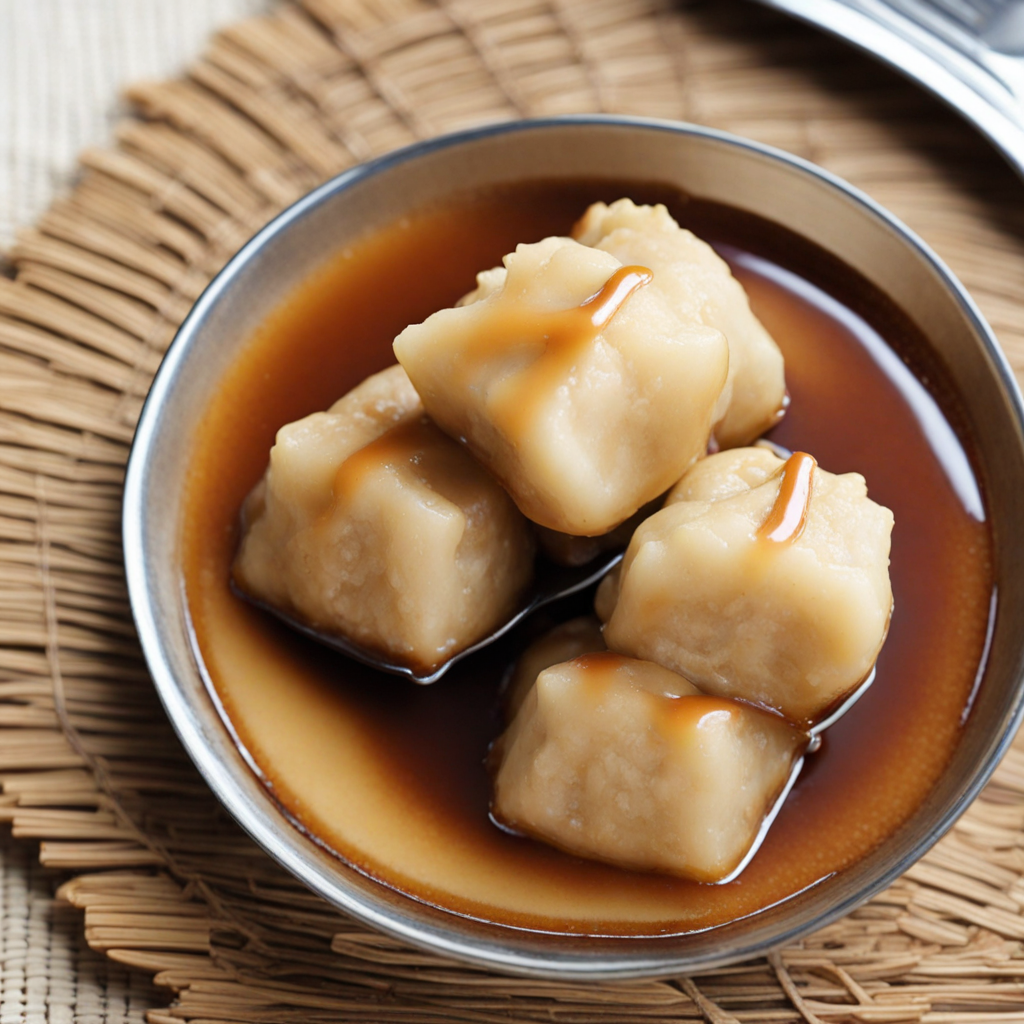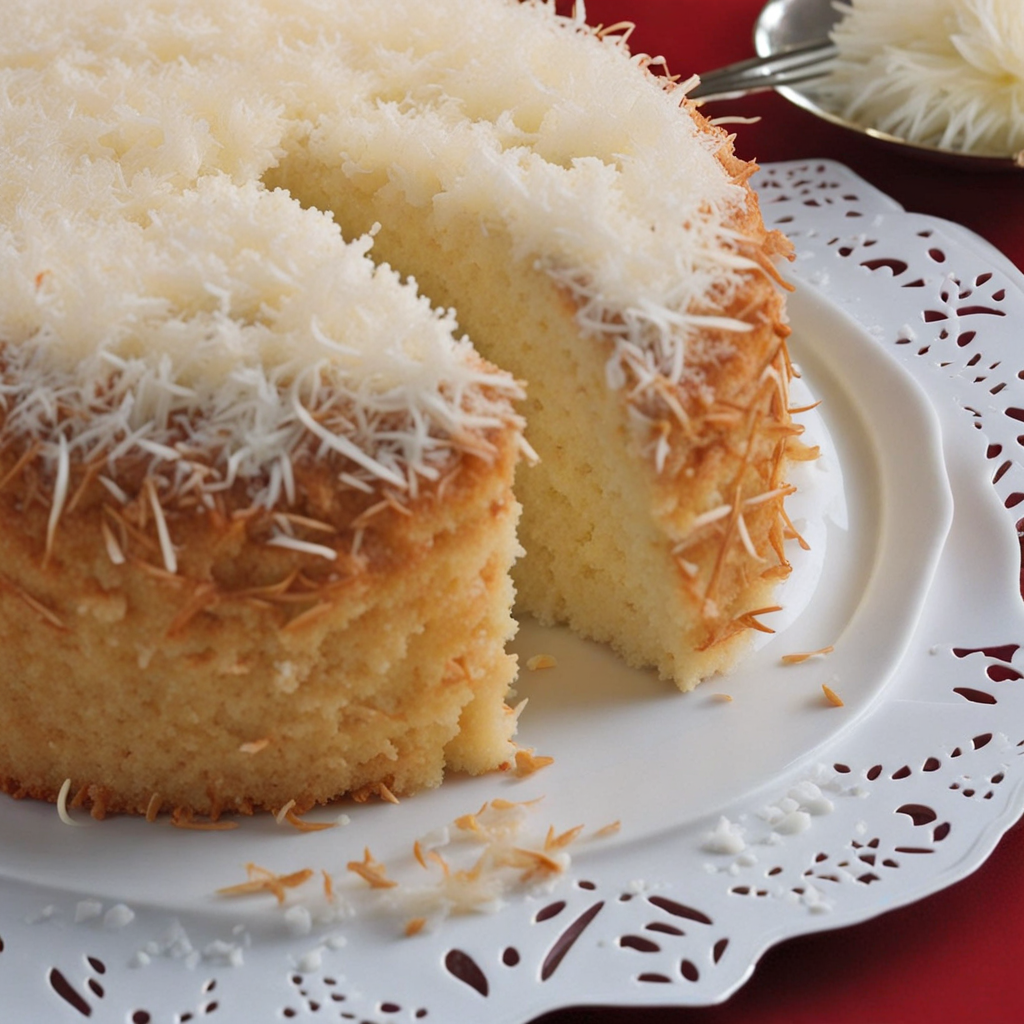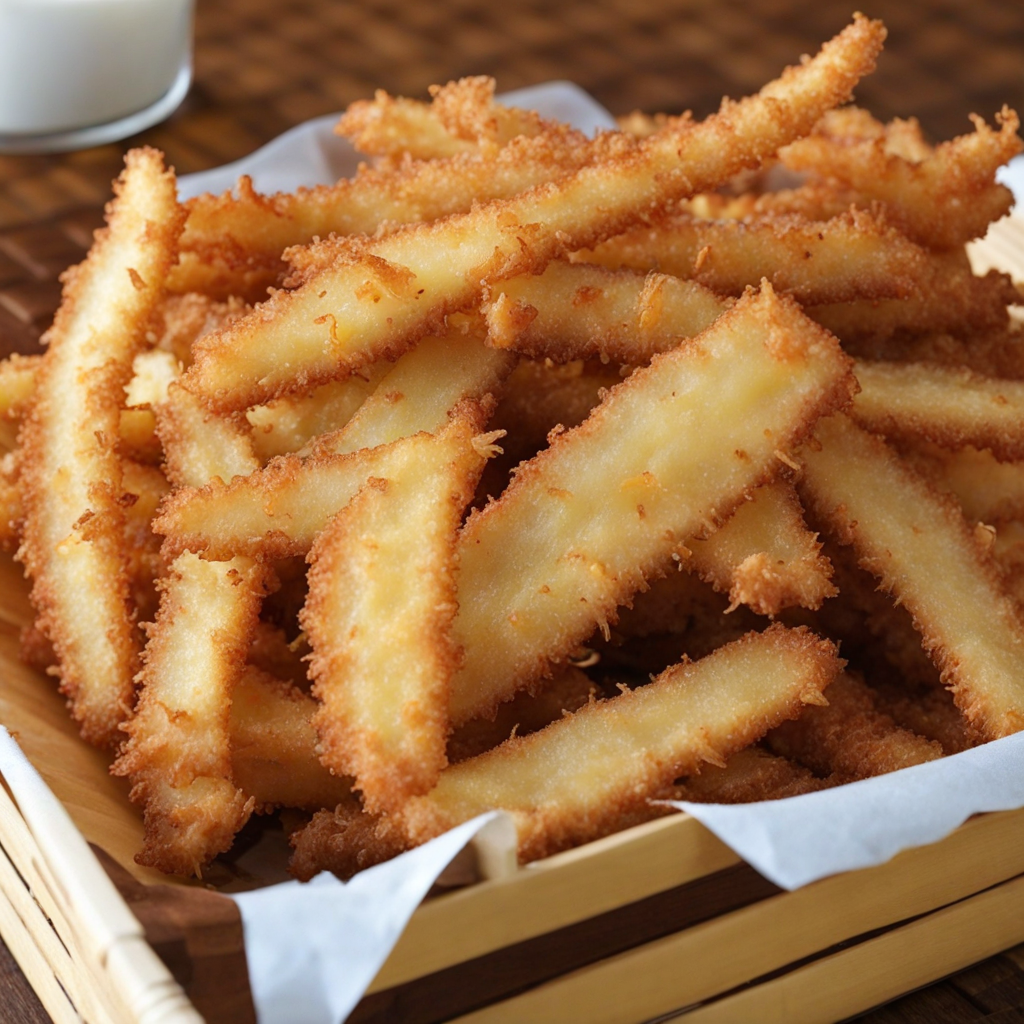Pani Popo
Pani Popo is a delightful Tongan dish that showcases the rich flavors of the Pacific Islands. This delectable treat consists of soft, fluffy coconut buns that are baked to perfection, resulting in a golden exterior and a pillowy interior. The dough is made from simple ingredients like flour, yeast, and sugar, which come together to create a comforting base. What truly sets Pani Popo apart is the generous bath of coconut cream poured over the buns before baking, infusing them with a luscious sweetness and a tropical aroma that transports you straight to the beach. The coconut cream used in Pani Popo is not only a key ingredient but also adds a layer of richness that elevates the dish to a new level. As the buns bake, they absorb the creamy goodness, making each bite a heavenly experience. The combination of the light, airy texture of the bread with the thick, sweet coconut sauce creates a harmonious balance that leaves you craving more. It’s a unique fusion of flavors that reflects the natural bounty of Tonga's islands, where coconut trees sway in the warm breeze. Pani Popo is often enjoyed warm, making it a perfect dessert or snack at any time of the day. Whether served at family gatherings, celebrations, or simply as a treat for yourself, these coconut buns are sure to impress with their delightful taste and texture. The dish not only showcases the culinary traditions of Tonga but also invites diners to experience the warmth and hospitality of Tongan culture through its comforting flavors.
How It Became This Dish
The History of Pani Popo: A Tongan Delight Pani Popo, a beloved traditional dish from Tonga, embodies the rich tapestry of Polynesian culinary heritage. This delightful dessert, characterized by soft coconut milk-soaked buns, is not just a treat for the palate but a reflection of Tongan culture, history, and community. #### Origins of Pani Popo The origins of Pani Popo can be traced back to the early Polynesian settlers who arrived in Tonga around 1000 BCE. These navigators brought with them a treasure trove of culinary traditions from their homelands, which included an intricate understanding of coconuts, taro, yams, and other local produce. The lush islands of Tonga, with their abundant coconut palms and fertile soil, provided the perfect environment for developing a cuisine that would resonate with both the local populace and future generations. Coconuts are central to Tongan culture, revered not only for their culinary uses but also for their role in daily life. In Tongan society, every part of the coconut palm is utilized for various purposes, from building materials to weaving. The flesh of the coconut and its milk became staples, leading to the creation of numerous dishes, including Pani Popo. The dish itself likely evolved as a way to combine the local ingredients in a simple yet satisfying manner, making use of everyday resources in a culturally significant way. #### Cultural Significance Pani Popo holds a special place in Tongan culture, often featured at feasts and celebrations. It is a dish that signifies hospitality, sharing, and togetherness. Traditionally, Tongan feasts, known as "lū," involve the communal preparation and consumption of food, and Pani Popo is frequently included as a sweet treat to conclude these gatherings. The dish is not only an expression of culinary skill but also a means of fostering social bonds within the community. The preparation of Pani Popo is often a communal activity, where family members come together to knead the dough, prepare the coconut milk, and bake the buns. This collaborative approach reinforces social ties and highlights the importance of family in Tongan society. The act of sharing food, especially something as heartwarming as Pani Popo, is imbued with deep cultural significance, symbolizing love, generosity, and community spirit. #### The Recipe and Its Evolution Traditionally, Pani Popo is made from simple ingredients: flour, sugar, yeast, water, and coconut milk. The dough is prepared and allowed to rise, then shaped into buns, which are placed in a baking dish and covered with a generous layer of coconut milk. The buns are baked until golden brown, soaking up the creamy coconut milk, resulting in a dish that is soft, sweet, and fragrant. Over time, variations of the recipe have emerged, reflecting the influences of globalization and the diaspora of Tongans around the world. In modern adaptations, Pani Popo may include additional ingredients such as vanilla or pandan for flavor, or even fruits like mango or pineapple for a tropical twist. These innovations showcase the adaptability of Tongan cuisine while maintaining the essence of the original dish. #### Globalization and Diaspora As Tongans have migrated to various parts of the world, particularly to countries like New Zealand, Australia, and the United States, Pani Popo has followed them, becoming a symbol of cultural identity and pride for the Tongan diaspora. In these new environments, the dish serves as a connection to home, a reminder of family gatherings, and a way to pass down culinary traditions to younger generations. In places with significant Tongan communities, such as Auckland and Los Angeles, Pani Popo is often featured at cultural festivals and Tongan church gatherings, showcasing the importance of maintaining cultural heritage through food. These events allow Tongans to celebrate their identity and share their culinary traditions with others, fostering cross-cultural understanding. #### Modern Interpretations and Recognition In recent years, there has been a growing interest in traditional foods from around the world, including those from the Pacific Islands. Pani Popo has gained recognition beyond Tongan communities, appreciated for its simplicity and the depth of flavor provided by coconut milk. Food bloggers and culinary enthusiasts have begun to showcase the dish, often sharing recipes that highlight its cultural significance and encourage people to explore the flavors of Tongan cuisine. Social media platforms have played a crucial role in this resurgence. Posts featuring Pani Popo, often accompanied by stories of family gatherings and cultural pride, have reached a global audience, inspiring many to try their hand at making this delightful dessert. The dish has become a way for people from diverse backgrounds to engage with Tongan culture, bridging gaps and fostering appreciation for the traditions of the Pacific Islands. #### Conclusion Pani Popo is more than just a dessert; it is a culinary emblem of Tongan culture, representing history, community, and adaptability. Its origins in the early days of Tongan settlement reflect a deep connection to the land and its resources, while its presence in modern society highlights the importance of cultural continuity in a rapidly changing world. As it continues to evolve and gain recognition on the global stage, Pani Popo serves as a delicious reminder of the richness of Tongan culinary traditions and the enduring bonds of family and community. Through every bite, one can taste the love, history, and resilience that define this enchanting dish, ensuring its place in the hearts of many for generations to come.
You may like
Discover local flavors from Tonga


